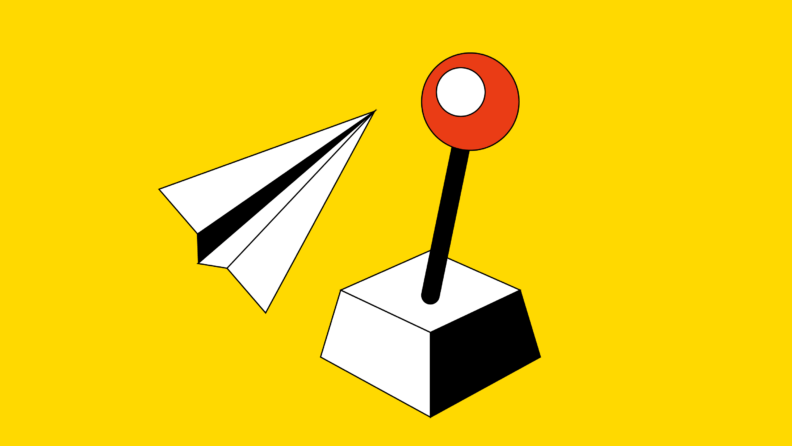Many sales teams get caught up in the monotony of everyday tasks, resulting in disengaged staff that are just dialing it in. If you’re seeing a drop in sales numbers, lack of engagement from your team, and a rising number of missed opportunities, catering a training lunch may not be the best solution. Instead, consider sales gamification and what it can do to help your team get back in touch with their goals and KPIs.
So what is sales gamification and how does it work to get your team back on track? Find out when you read my comprehensive overview here.
Defining Sales Gamification
You see gamification everywhere in the world around you. It’s what keeps people loyal to companies or glued to their phone screens. Whether it’s earning loyalty points at your favorite grocery store or getting a chance to enter a raffle at your gym, incentives that focus on competition and meeting metrics are how these companies keep you engaged.
When it comes to sales gamification, you’re taking game-based mechanics and adding them into your sales pipeline to make boring or difficult tasks more fun and interesting for your team. There are plenty of gamification strategies that may work depending on your company goals and your team’s psychology, including leaderboards, incentives, and short-term competitions.
The Psychology Behind Sales Gamification
Sales gamification strives to leverage innate human psychology to motivate and engage your team. This tactic is based on the principle of operant conditioning, where the consequences of behavior determine whether it will be repeated. Rewards and praise are the most common types of positive reinforcement that encourage operant conditioning.
When you give sales reps approval and prizes for completing their tasks, they’re getting a small dopamine rush for that recognition, ensuring they actually want to get to work every time they come in. As you continue rewarding salespeople for actions that contribute to your company goals, they’re motivated to repeat them.
Eventually, these behaviors become innate and you won’t need to reward them every time. Over time, even new team members will assimilate these best practices during training because they become ingrained throughout your organization.
Sales Gamification Strategies

Did you know 89% of people say that sales gamification in the workspace makes them more productive? Since there are various kinds of sales gamification strategies, you can strive to engage more team members using various types of motivation that are customized to their personalities and for your unique sales process, milestones, and goals.
1. Progress Bars
Whether they’re designed for the individual or for your team, a progress bar visually depicts how close they are to achieving their goal. Whether it’s finalizing and closing deals or cold calling a certain number of people, the progress bar is a powerful tool that tracks success. With definitive metrics toward completion, you encourage beneficial sales activities.
Say goodbye to call fatigue! Find software to scale cold calling efforts.
2. Friendly Competitions
You can use gamification to enhance sales performance through sales competitions with a point-based reward system. As teams or individuals complete goals, a gamification platform with a dashboard can track their performance publicly to push everyone ahead and create healthy competition.
You can make the final prize anything you want, including monetary rewards, gift cards, or other office perks.
3. Recognition
Tracking leaderboard rankings publicly ensures top performers are recognized by their peers and sales managers for the effort they’re putting into the job. Add real-time notifications to your game mechanics, and everyone will get a heads-up when someone moves ahead, pushing employee engagement to get to the top of the charts.
You can create badges and awards on a weekly or monthly basis that allow you to recognize the top performer for a particular time period and then restart the competition again, giving other sales reps the chance to reach the top and earn the badge.
4. Team-Based Prizes
If encouraging teamwork is your top priority, focus your sales gamification ideas on rewards that ensure everyone benefits — like a catered team lunch or leaving early on Fridays. With a general quota your team can track, they will see who is contributing to their progress and how close they are to their goals.
Types of Gamers

Not everyone has the same motivational triggers, so your gamification techniques might be more engaging to some than others. Analyze the types of gamers you have on your team and create several different gamification program to draw in as many employees as possible.
Socializers
A socializer is someone who prefers social rewards over material ones. They like recognition and respect. For these people, the best game-like elements include progress bars, badges, and leaderboards.
Prize-Chasers
For prize-chasers, you want to provide plenty of physical rewards for success, like discounts, money, and gift cards. Your gamified sales process should include goal tracking and competitions that reward them with a real-world prize.
Fun-Seekers
The last type of gamer is a fun-seeker who plays for the enjoyment of the process. Sales gamification works for them when their workflow simulates real life through interactive elements like puzzles.
Create a Productive Sales Environment
If you don’t think you’re ready to create your own gamification strategies, there are plenty of sales gamification software solutions that can help. These sales gamification tools generally integrate with your CRM, like HubSpot or Salesforce, to track progress and show results. You’ll also find the best sales gamification software provides game templates, pre-built sales contests, and one-on-one evaluations to enhance sales productivity.
Balance your sales gamification tools with the best sales coaching software to ensure you’re building up the right skills and behaviors while incentivizing your team.
Looking for even more tools and advice to enhance sales performance? Sign up for the RevOps Newsletter to get insights from the experts every week.


